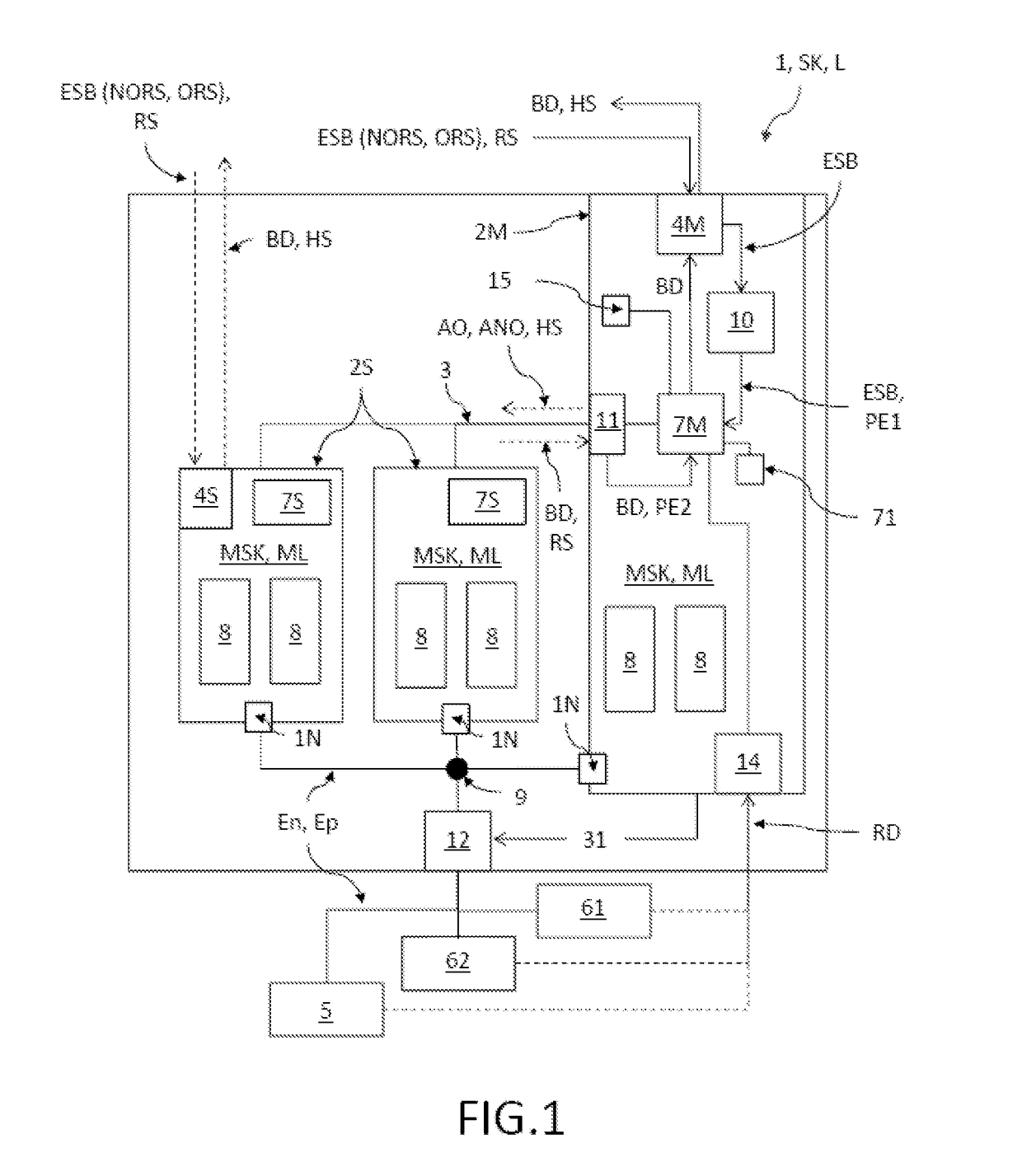Energy storage system and modular communication
a technology of energy storage and modular communication, applied in transmission systems, power oscillation reduction/prevention, ac network load balancing, etc., can solve the problems of battery storage devices, devices that have been planned so far do not fulfill localized tasks, and the operation method is not adapted to stabilize or improve the quality of small local power supply systems. , to achieve the effect of improving the quality of local grids
- Summary
- Abstract
- Description
- Claims
- Application Information
AI Technical Summary
Benefits of technology
Problems solved by technology
Method used
Image
Examples
Embodiment Construction
[0072]FIG. 1 shows an exemplary embodiment of the energy storage system 1 according to the invention. In this embodiment, the energy storage system 1 has three energy storage modules 2M, 2S each having two flywheel energy storage units 8 for reversible storage of energy per energy storage module 2M, 2S each having a module storage capacity MSK and a module output ML. The three energy storage modules 2M, 2S are split between a master module 2M for controlling the energy storage module 1 and two slave modules 2S. The embodiment shown here is only exemplary. The number of energy storage modules 2M, 2S per energy storage system 1 depends on the particular application desired and therefore vary strongly. Use can also be made of energy storage systems 1 having only one single energy storage module 2M which, in the present case, is a master module 2M. In the illustrated instance, the energy storage modules 2M, 2S are connected via a common connection point 9, with the result that their mod...
PUM
 Login to View More
Login to View More Abstract
Description
Claims
Application Information
 Login to View More
Login to View More - R&D
- Intellectual Property
- Life Sciences
- Materials
- Tech Scout
- Unparalleled Data Quality
- Higher Quality Content
- 60% Fewer Hallucinations
Browse by: Latest US Patents, China's latest patents, Technical Efficacy Thesaurus, Application Domain, Technology Topic, Popular Technical Reports.
© 2025 PatSnap. All rights reserved.Legal|Privacy policy|Modern Slavery Act Transparency Statement|Sitemap|About US| Contact US: help@patsnap.com



